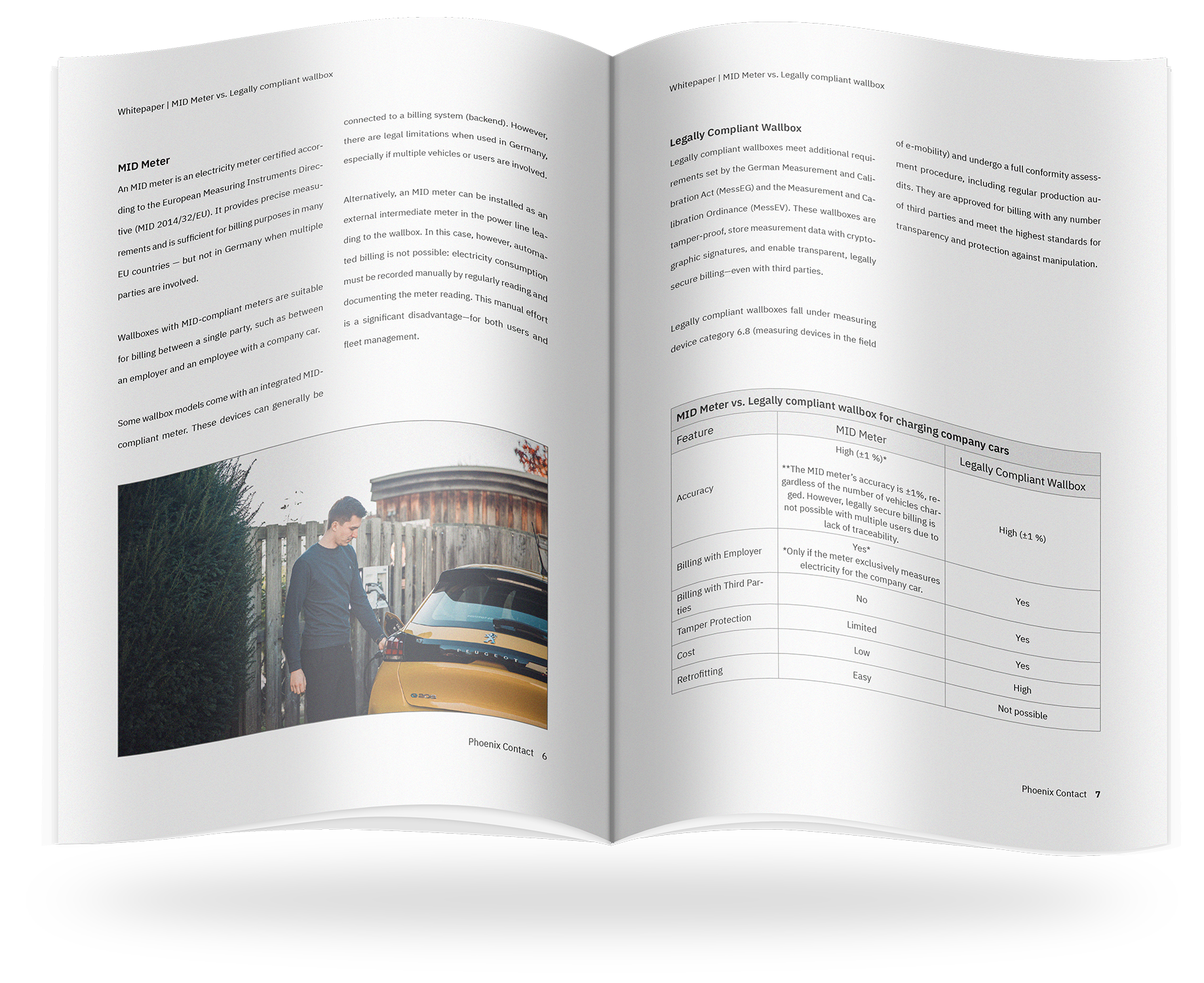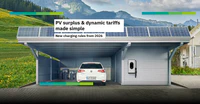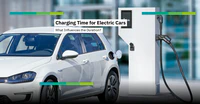With the electric company car comes the question: Where and how will it be charged? One of the most popular options: charging at home. And this is where things get interesting—many employers now cover the cost of a wallbox. This article explains why that makes sense, what models are available, and why some companies consciously choose not to offer this benefit.
Why Employers Should Invest in Wallboxes
Lowering Barriers – Encouraging Use
Providing or subsidizing a wallbox lowers the entry barrier for employees to conveniently charge their EVs at home. This promotes the everyday use of electric company cars and allows charging with affordable household electricity instead of costly public infrastructure—a real benefit for employees.
Boosting Employer Attractiveness
Such an offer demonstrates innovation and environmental awareness. It positions companies as modern and sustainable employers, which is a plus in the competition for talent and employee retention.
Supporting Efficient Mobility
The ability to charge flexibly at home—overnight or during remote work—increases the practicality of electric company cars. It reduces the need for on-the-go charging and enhances daily efficiency.
Taking Advantage of Tax Benefits
Although tax advantages primarily benefit employees, companies also gain indirectly: simplified implementation under § 3 No. 46 EStG or flat-rate taxation under § 40 Para. 2 Sentence 1 No. 6 EStG reduces administrative effort and provides clear legal guidelines.
Download our charge@home Guide now!
Our guide highlights the requirements for a home charging solution and explains what is needed to use it for legally compliant billing of company cars. Learn more about the installation of wallboxes, legal frameworks, and efficient billing solutions for home charging.
REQUEST GUIDE
What Employees Gain
Convenience & Transparent Billing
Charging at home is convenient and time-saving, especially when the wallbox is integrated into a billing system. While employees initially pay for the electricity, automated reimbursement creates a fair and transparent solution. Business and private charging can be clearly separated and accurately billed—no need to hunt for public chargers or deal with multiple billing systems.
Transparency & Fairness
If employees use a company-funded wallbox connected to a billing system, it creates a transparent data basis for reimbursements. For example, if a private vehicle is also charged, an RFID card can distinguish energy usage. This builds trust and avoids billing disputes.
Planning Security & Flexibility
A home wallbox allows employees to align charging with their daily routines—overnight or during remote work—greatly enhancing the practicality of electric company cars.
Tax Benefits
Disclaimer: The following does not constitute legal advice. Please consult your tax advisor for your specific case.
Employer-funded or subsidized wallboxes remain tax-advantaged—at least through the end of 2030. Two key provisions in the German Income Tax Act (EStG) apply:
Tax Exemption under § 3 No. 46 EStG
If the employer provides a wallbox or grants a subsidy for its purchase or use, this can be tax-free—provided it is in addition to regular wages. This also applies to:
Charging an electric or hybrid vehicle at the company or affiliated companies,
Temporary private use of a company charging station (e.g., wallbox at the workplace),
Employer-provided electricity, even at home.
Flat-Rate Taxation under § 40 Para. 2 Sentence 1 No. 6 EStG
If tax exemption conditions aren’t met (e.g., salary conversion), the employer can apply a 25% flat tax on the benefit. This includes:
Transfer of ownership of a wallbox to employees,
Subsidies for purchase or use.
In both cases, the benefit must be in addition to regular wages.
No Payroll Record Requirement
A practical advantage: tax-free benefits under § 3 No. 46 EStG do not need to be recorded in payroll accounts (§ 4 Para. 2 No. 4 Sentence 1 LStDV), reducing administrative effort.
Retrofitting with MID Meter, Legally Compliant Wallbox, or Charge Repay Service?
Discover your options for legally compliant billing of company car charging at home: When is retrofitting with an MID meter sufficient, when is a legally compliant wallbox required—and how does the Charge Repay Service bridge the gap without needing to replace your wallbox?
REQUEST WHITEPAPER
What Models Exist in Practice?
Employer Covers Everything
Full funding of wallbox, installation, and backend. This involves transferring ownership and is taxed under § 40 Para. 2 Sentence 1 No. 6 EStG. Planning is less predictable for employers due to variable installation costs. Employees benefit most, though they may be limited to specific wallbox models.
Subsidy Model
Fixed employer subsidy (e.g., €500), remainder paid privately—tax-efficient and flexible. Employees can choose their wallbox but must handle selection and installation. If the wallbox is to be integrated into a billing system, a flexible solution like the Charge Repay Service ensures legally compliant billing for any model.
Why Some Companies Don’t Fund Wallboxes
Ownership and Liability Questions
If the employer pays for the wallbox, who owns it? What happens if the employee leaves or moves?
- Employer Ownership – With Limitations
If the employer funds and installs the wallbox, ownership typically lies with the company. However, since the wallbox is fixed to the building, it may legally become part of the property. Removal may require landlord or owner approval.
- Employee Ownership – More Flexibility, More Responsibility
If employees buy the wallbox (possibly with a subsidy), they own it and can take it when moving. But they are also responsible for maintenance, repairs, and removal.
- Recommendation: Clear Contractual Agreement
Before purchase, a written agreement should clarify:
Who owns the wallbox,
Who is responsible for maintenance, removal, and insurance,
What happens when employment ends.
Also consider who operates the electrical system and is responsible for inspections and damage.
Administrative Effort
Setting up an automated billing system is efficient but requires upfront effort—from selecting a qualified provider to integrating with HR and finance systems.
Complexity in Rental Properties
In multi-family buildings, installation can be technically and legally challenging. Even though employees have a right to install (§ 554 BGB), implementation can be complex.
Conclusion: Between Win-Win and Reality
Employer subsidies or provision of wallboxes offer many benefits. Employees enjoy convenient home charging, and companies present themselves as forward-thinking and sustainable. In theory, it’s a win-win.
In practice, success depends on clear frameworks. Ownership issues, technical challenges, and administrative effort can complicate implementation. Those who address these early and use transparent billing systems create a solution that works for both sides—and truly simplifies life with an electric company car.




